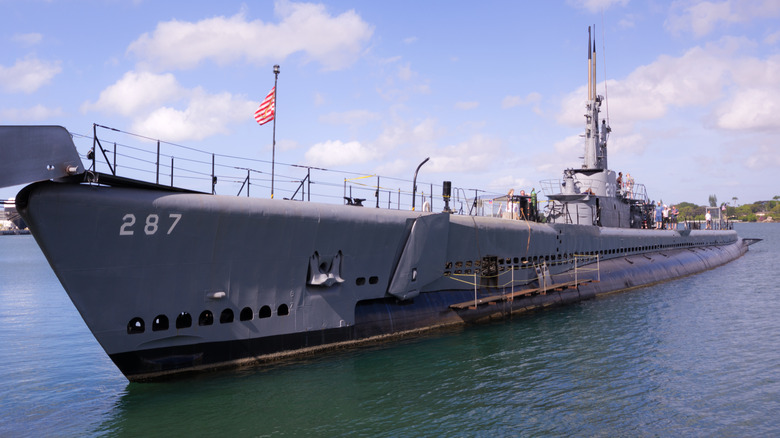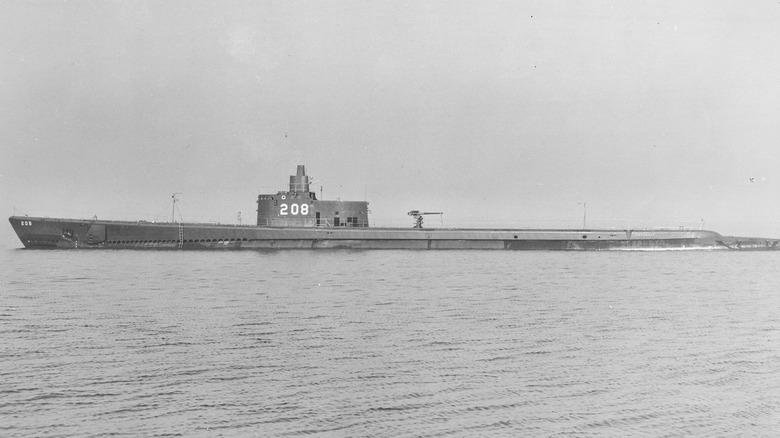Sacrifice At Sea: The Tragic Tale Of World War 2's USS Grayback
Submarines have evolved throughout history to become some of the most important vessels in naval warfare. During World War II, the Allied and Axis powers fielded fleets of subs, and the U.S. Navy's so-called "Silent Service" fought hard against imperial Japan in the Pacific. The conflict saw many submarines lost on all sides — including 52 U.S. Navy subs that sank, taking 3,506 submariners to their graves. That made the death rate for American submarine crew members a tragic 21.9% over the course of the war. One vessel that didn't survive the war was the USS Grayback (SS-208), a Tambor-class boat commissioned on June 30, 1941.
Initially, the Grayback was assigned to the Atlantic theater, but she sailed to the Pacific when the U.S. formally entered the war. During her time, she sank 14 enemy vessels, amounting to a total loss of 63,835 tons. That made the Grayback the 24th most lethal submarine in terms of the number of vessels taken out, and she ranked 20th regarding total tonnage sunk. She left Pearl Harbor for the last time in late January of 1944 and was scheduled to reach Midway Island on March 7, but she never made it.
The wreck of the Grayback was lost, and the only knowledge of her sinking came from a 1949 analysis of a Japanese report. The report misidentified the coordinates of where the sinking occurred, and because the number was off by one digit, the search area was 100 miles off course. This left the Navy and the family members of those lost without closure after their daring service and sacrifice. Fortunately, the Grayback was finally found in 2019 — 75 years after she was lost.
Undersea drones helped locate the wreck of the Greyback
The USS Grayback displaced 1,499 tons of seawater while on the surface and 2,410 tons while submerged. She measured 27 feet, 3 inches wide and 307 feet, 2 inches long, and could sail up to 20.4 knots (23.5 mph) on the surface and 8.75 knots (10 mph) while submerged. The submarine could navigate underwater to a depth of 250 feet, and she was powered by four General Motors Model 16-248 V16 diesel engines. In terms of armament, she boasted one 3-inch .50 caliber deck gun, 20mm and 40mm cannons, and ten 21-inch torpedo tubes — six forward and four aft.
The Grayback successfully completed nine patrols before she was sunk. The mistranslated records that pointed to the wrong location revealed that the Grayback was sunk by a 500-lb. bomb that was dropped from a Nakajima B5N bomber. Once it was hit, the Grayback exploded and sank, taking the lives of all 80 crewmen onboard. Fast-forward to the 21st century, and a group called the Lost 52 Project began the hunt to find all 52 U.S. subs lost during WWII. It took a lot of time and effort to correctly translate the original report detailing the sinking and combine it with Navy records, but the boat was ultimately found.
After three generations of being lost on the seafloor, the Grayback was located about 58 miles south of Okinawa, Japan at a depth of around 1,400 feet. The wreck was found using drones that searched the seabed at the appropriate coordinates. The USS Grayback wasn't one of the most historically significant submarines in military history, but she made a big impact on the war effort. While the complete details of her loss will never be fully understood, the finding of the USS Grayback at least closes the door, giving the families of those lost some peace.

